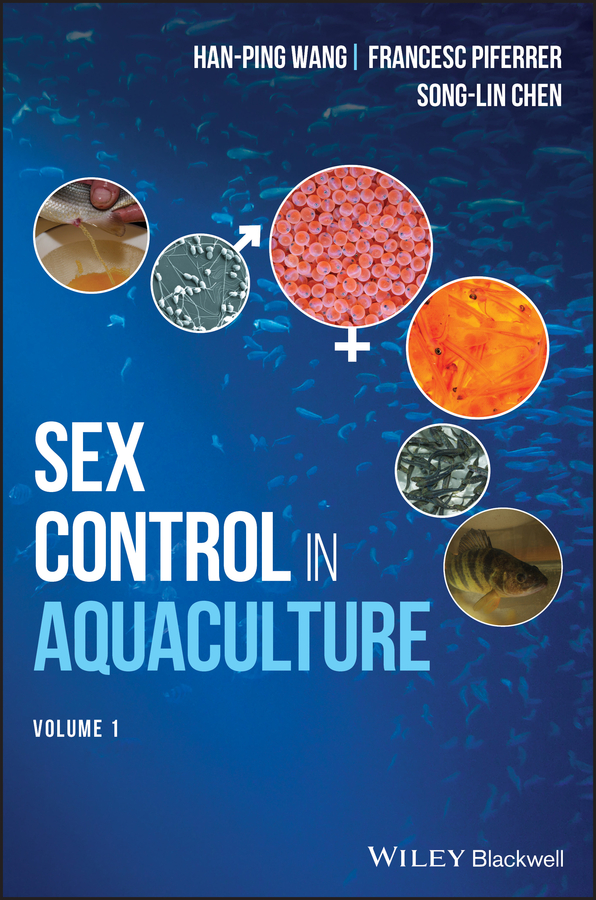Электронная книга: Hanping Wang «Sex Control in Aquaculture»

|
A comprehensive resource that covers all the aspects of sex control in aquaculture written by internationally-acclaimed scientists Comprehensive in scope, Sex Control in Aquaculture first explains the concepts and rationale for sex control in aquaculture, which serves different purposes. The most important are: to produce monosex stocks to rear only the fastest-growing sex in some species, to prevent precocious or uncontrolled reproduction in other species and to aid in broodstock management. The application of sex ratio manipulation for population control and invasive species management is also included. Next, this book provides detailed and updated information on the underlying genetic, epigenetic, endocrine and environmental mechanisms responsible for the establishment of the sexes, and explains chromosome set manipulation techniques, hybridization and the latest gene knockout approaches. Furthermore, the book offers detailed protocols and key summarizing information on how sex control is practiced worldwide in 35 major aquaculture species or groups, including fish and crustaceans, and puts the focus on its application in the aquaculture industry. With contributions from an international panel of leading scientists, Sex Control in Aquaculture will appeal to a large audience: aquaculture/fisheries professionals and students, scientists or biologists working with basic aspects of fish/shrimp biology, growth and reproductive endocrinology, genetics, molecular biology, evolutionary biology, and R&D managers and administrators. This text explores sex control technologies and monosex production of commercially-farmed fish and crustacean species that are highly in demand for aquaculture, to improve feed utilization efficiency, reduce energy consumption for reproduction and eliminate a series of problems caused by mixed sex rearing. Thus, this book: Contains contributions from an international panel of leading scientists and professionals in the field Provides comprehensive coverage of both established and new technologies to control sex ratios that are becoming more necessary to increase productivity in aquaculture Includes detailed coverage of the most effective sex control techniques used in the world's most important commercially-farmed species Sex Control in Aquaculture is the comprehensive resource for understanding the biological rationale, scientific principles and real-world practices in this exciting and expanding field. Издательство: "John Wiley&Sons Limited"
ISBN: 9781119127284 электронная книга Купить за 31843.34 руб и скачать на Litres |
Другие книги схожей тематики:
| Автор | Книга | Описание | Год | Цена | Тип книги |
|---|
См. также в других словарях:
Octopus aquaculture — The common octopus, Octopus vulgaris The development of octopus aquaculture, the farming of octopus, is being driven by strong market demands in the Mediterranean and in South American and Asian countries.[1] Octopus live short lives … Wikipedia
Life Sciences — ▪ 2009 Introduction Zoology In 2008 several zoological studies provided new insights into how species life history traits (such as the timing of reproduction or the length of life of adult individuals) are derived in part as responses to… … Universalium
New Zealand longfin eel — Māori: tuna New Zealand longfin eel at the base of a waterfall near Piha beach, Waitakere Ranges, Auckland. Scientific classification Kingdom … Wikipedia
china — /chuy neuh/, n. 1. a translucent ceramic material, biscuit fired at a high temperature, its glaze fired at a low temperature. 2. any porcelain ware. 3. plates, cups, saucers, etc., collectively. 4. figurines made of porcelain or ceramic material … Universalium
China — /chuy neuh/, n. 1. People s Republic of, a country in E Asia. 1,221,591,778; 3,691,502 sq. mi. (9,560,990 sq. km). Cap.: Beijing. 2. Republic of. Also called Nationalist China. a republic consisting mainly of the island of Taiwan off the SE coast … Universalium
Protein adulteration in the People's Republic of China — refers to the adulteration and contamination of several food and feed ingredients with inexpensive melamine and other compounds such as cyanuric acid, ammeline and ammelide. These adulterants can be used to inflate the apparent protein content of … Wikipedia
